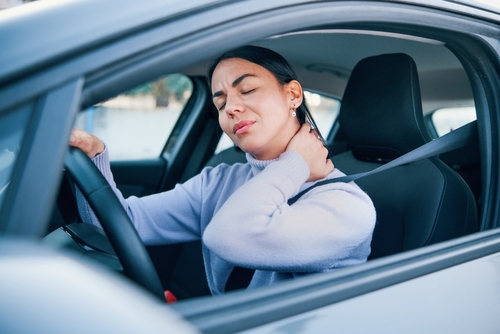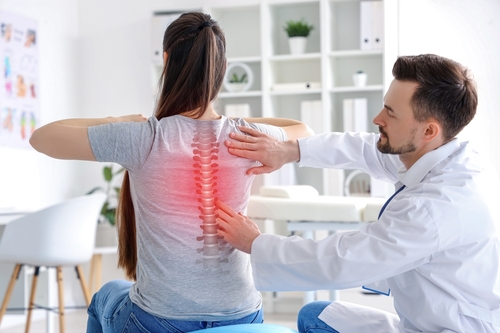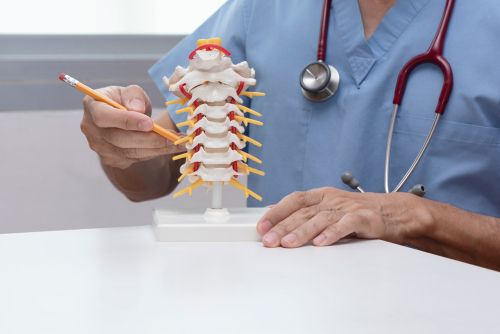Comprehensive Pain Management After an Accident: Personalized Care for Lasting Chronic Pain Relief
At Apex Orthopaedics Spine & Neurology, we understand the profound impact that chronic pain can have on an individual’s quality of life, especially following a traumatic incident like a car accident or motor vehicle accident. Our team of experienced pain management specialists is dedicated to providing comprehensive care and personalized treatment plans to help you prevent and manage chronic pain effectively. With a focus on early intervention, physical therapy, and holistic approaches to pain management, we guide our patients towards recovery and improved well-being.
By addressing pain early and proactively, we aim to reduce the risk of long-term complications and help patients return to their normal activities as quickly and safely as possible. Whether you’re recovering from whiplash, musculoskeletal injuries, or nerve damage, our integrated approach ensures you receive the support, education, and therapies you need to minimize pain and restore quality of life.
Chronic Pain: Causes, Treatment, and Long-Term Management
Chronic pain is a complex and debilitating condition that affects millions of people worldwide. Defined as pain that persists for more than 12 weeks, it can arise from various factors, including orthopedic conditions, nerve damage, and musculoskeletal injuries. This persistent pain can have a significant impact on daily life, affecting not only physical well-being but also emotional and mental health.
Treating chronic pain requires a comprehensive approach. Physical therapy plays a crucial role in restoring function and relieving pain through targeted exercises and therapies. Medications, including pain medicine and anti-inflammatory drugs, can help manage symptoms, but they should be used responsibly and in conjunction with other treatments. Lifestyle changes, such as maintaining a balanced diet, staying hydrated, and incorporating mind-body techniques, are also essential in managing chronic pain.
A pain management specialist can help individuals develop a personalized treatment plan tailored to their specific needs. This plan aims to address the underlying cause of the pain and restore function, ultimately improving the individual’s quality of life. By taking a proactive and holistic approach to treating chronic pain, individuals can better manage their symptoms and enhance their overall well-being.
Understanding Chronic Pain After an Accident
Chronic pain can emerge after a motor vehicle collision, significantly affecting your daily life. Understanding its definition and common causes is essential for effective management.
Definition and Common Causes
Chronic pain refers to persistent pain that lasts for weeks or months after an injury. It can stem from various factors, including:
- Nerve Damage: Injuries can harm nerves, leading to ongoing pain signals.
- Muscle Tension: Stress and injuries can cause muscles to tighten, resulting in pain.
- Traumatic Injuries: Accidents often lead to conditions like whiplash or fractures that can cause lasting discomfort.
Soft tissue injuries are the most common type of injury resulting from motor vehicle accidents, affecting muscles, ligaments, and tendons.
Types of Pain
Different types of pain may arise after an accident:
- Musculoskeletal Pain: This pain affects bones, muscles, and joints. Injuries can lead to discomfort in these areas.
- Nerve Pain: Damage to nerves can result in sharp, shooting pains or numbness.
- Joint Pain: Injuries can lead to inflammation and pain in the joints.
- Chronic Widespread Pain: This condition affects multiple areas of the body and can be linked to psychological factors.
- Shoulder Pain: Injuries from the shoulder belt restraint can lead to strains and ligament tears, resulting in chronic pain.
Significant Impact on Daily Life and Overall Well-Being
Chronic pain is a complex condition that can disrupt daily tasks, such as work, exercise, and social interactions. It can lead to feelings of frustration, anxiety, and depression. The persistent nature of pain can affect your overall well-being, making it crucial to seek effective treatment options. Understanding these factors can help you take proactive steps in managing and preventing chronic pain after an accident.
Identifying Risk Factors for Chronic Widespread Pain
Chronic widespread pain (CWP) is a common condition characterized by pain in multiple areas of the body, including the neck, back, and joints. Identifying risk factors for CWP is crucial in preventing and managing the condition. Some common risk factors for CWP include a history of motor vehicle accidents, traumatic injuries, and certain medical conditions such as rheumatoid arthritis.
Psychological factors, such as anxiety and depression, can also exacerbate pain and contribute to the development of CWP. Understanding these risk factors can help individuals take proactive steps to prevent CWP and seek medical attention if symptoms persist. For instance, addressing psychological factors through counseling or mind-body techniques can significantly reduce the impact of pain.
A pain management specialist can help individuals develop a personalized treatment plan to address their specific needs and reduce the risk of developing CWP. This plan may include a combination of physical therapy, medication, lifestyle changes, and supportive therapies. By understanding and addressing the risk factors for CWP, individuals can take control of their health and improve their quality of life.
Early Intervention and Accurate Diagnosis
Immediate medical care after an accident is crucial. Seeking treatment right away can help identify injuries that may lead to chronic pain. Common injuries include broken bones, herniated discs, and whiplash. An accurate diagnosis allows for effective treatment and pain management.
When you visit a healthcare provider after an accident, they will conduct a thorough examination. This examination may include imaging tests like X-rays or MRIs to assess any underlying conditions. Identifying the source of pain early can prevent complications and promote quicker recovery.
Collaboration with pain management specialists is essential. These experts can create personalized treatment plans based on your specific injuries and pain levels. They may recommend a combination of therapies, including physical therapy, medication, and lifestyle adjustments.
By understanding the importance of early intervention and accurate diagnosis, you can take proactive steps to manage pain. This approach not only addresses immediate concerns but also helps prevent chronic pain from developing, ultimately improving your overall quality of life.
Physical Therapy and Rehabilitation
Physical therapy plays a crucial role in preventing chronic pain after an accident. It focuses on restoring function and relieving pain through targeted exercises and therapies to the affected area. After an injury, physical therapy helps patients regain strength, flexibility, and mobility.
Role of Physical Therapy in Restoring Function and Relieving Pain
Physical therapists assess the specific needs of each patient. They develop personalized rehabilitation plans that address individual injuries and pain levels. Physical therapy can also be effective in managing conditions like spinal stenosis, which can cause chronic pain. By using a combination of manual therapy, therapeutic exercises, and modalities like heat or ice, physical therapy can significantly reduce pain and improve function.
Benefits of Targeted Exercises to Prevent Stiffness and Muscle Tension
Targeted exercises are essential in preventing stiffness and muscle tension. Targeted exercises can also help alleviate abdominal pain that may arise after an accident. These exercises help maintain joint mobility and promote blood flow to the affected areas. Regular physical activity strengthens muscles and reduces the risk of re-injury. Patients learn exercises that they can perform at home, ensuring they continue to progress even outside of therapy sessions.
Enhancing Mobility and Quality of Life Through Physical Activity
Engaging in physical activity is vital for overall well-being. It not only enhances mobility but also boosts mood and energy levels. Physical therapy encourages patients to participate in activities that they enjoy, fostering a positive mindset. As patients regain their physical abilities, they often find improvements in their quality of life, enabling them to return to daily tasks and activities they love.
In summary, physical therapy and rehabilitation are key components in preventing chronic pain after an accident. By focusing on restoring function, preventing stiffness, and enhancing mobility, patients can achieve better outcomes and a higher quality of life.
Medication and Interventional Procedures
After an accident, managing pain often requires a combination of medication and interventional procedures. These approaches can help alleviate discomfort and promote healing while addressing the underlying causes of pain.
Nerve blocks and mindful meditation can influence how the brain processes pain, providing chronic pain relief for chronic pain sufferers.
Use of Pain Medicine and Anti-Inflammatory Medications
Pain medicine plays a vital role in managing chronic pain. Over-the-counter options like ibuprofen or acetaminophen can provide immediate relief for mild pain. For more severe pain, doctors may prescribe stronger medications, including opioids. However, it is essential to use these medications responsibly and under the guidance of a healthcare provider to minimize the risk of dependency.
Effective pain management is crucial for disease control, as it can prevent complications and improve overall health.
Anti-inflammatory medications can also help reduce swelling and inflammation, which are common after injuries. By controlling inflammation, patients may experience less pain and improved mobility.
Exploring Interventional Treatments
In addition to medication, interventional treatments can be effective for managing chronic pain. Interventional treatments are a key component of chronic pain management, providing targeted relief for persistent pain. These procedures can provide targeted chronic pain relief and may include:
- Injections: Corticosteroid injections can reduce inflammation in specific areas, such as joints or the spine. This can lead to significant chronic pain relief and improved function.
- Nerve Blocks: Nerve block injections can interrupt pain signals from specific nerves. This treatment can be beneficial for patients experiencing nerve pain or chronic musculoskeletal pain.
- Radiofrequency Ablation: This procedure uses heat to disrupt nerve function, providing longer-lasting chronic pain relief for conditions like arthritis or chronic back pain.
These interventional options are typically considered when conservative treatments have not provided sufficient chronic pain relief. Working closely with a pain management specialist can help determine the most appropriate approach for your situation.
By combining medication with interventional treatments, patients can effectively manage their pain and improve their overall quality of life after an accident. It is crucial to communicate openly with healthcare providers about pain levels and treatment effectiveness to ensure the best possible outcomes.
Lifestyle Modifications and Self-Care
After an accident, making lifestyle changes can significantly help in preventing chronic pain. These modifications focus on improving overall health and well-being, which can reduce the risk of pain becoming a long-term issue.
It is important to work closely with your healthcare provider to develop a comprehensive self-care plan.
Importance of Rest, Balanced Nutrition, and Hydration
Rest is crucial for recovery. Soft tissue injuries are a common type of injury that can benefit from proper rest and nutrition. It allows your body to heal and reduces strain on injured areas. Aim for quality sleep each night, as it plays a vital role in recovery. Alongside rest, maintaining a balanced diet rich in nutrients supports healing. Foods high in omega-3 fatty acids, antioxidants, and vitamins can reduce inflammation and promote recovery. Staying hydrated is equally important. Water helps maintain joint health and supports overall bodily functions.
Mind-Body Techniques to Address Psychological Factors
Chronic pain often intertwines with psychological factors like anxiety and depression. Implementing mind-body techniques can help manage these feelings. Practices such as mindfulness, meditation, and yoga can reduce stress and improve mental health. These techniques also promote relaxation, which can alleviate muscle tension and discomfort.
Avoiding Reliance Solely on Medications
While medications can provide chronic pain relief, relying solely on them may not address the root cause of chronic pain. It is essential to combine medication with lifestyle changes and other therapies. This holistic approach can lead to better long-term outcomes. Engage in physical activities suited to your ability, such as walking or swimming, to enhance mobility and strengthen muscles. By taking an active role in your recovery, you can better manage pain and improve your quality of life.
Alternative and Complementary Therapies
Alternative and complementary therapies can play a significant role in managing chronic pain after an accident. Pain management is a medical specialty that often incorporates alternative therapies for comprehensive care. These approaches often work alongside traditional treatments, providing additional options for chronic pain relief and improving overall well-being.
Considering Acupuncture and Massage Therapy for Additional Relief
Acupuncture involves inserting thin needles into specific points on the body. This method may help relieve pain by stimulating the nervous system and promoting natural healing. Many patients report reduced pain levels and improved mobility after acupuncture sessions.
Massage therapy is another effective option. It helps reduce muscle tension, improve blood flow, and promote relaxation. Regular massage can alleviate chronic pain, especially in areas affected by injuries, such as the neck, back, and shoulders.
Exploring Supportive Therapies for Chronic Musculoskeletal Pain Management
Supportive therapies, such as chiropractic care and physical therapy, can also aid in managing chronic musculoskeletal pain. Chiropractic adjustments can help realign the spine, improving function and reducing pain. Physical therapy focuses on exercises that strengthen muscles and enhance flexibility, further aiding recovery.
Additionally, mindfulness practices like yoga and meditation can help manage pain by reducing stress and promoting mental clarity. These practices encourage a mind-body connection that can lead to better pain management and improved emotional health.
Incorporating these alternative and complementary therapies, alongside traditional medical treatments, can provide a holistic approach to managing chronic pain after an accident. It is essential to discuss these options with your healthcare provider to create a comprehensive treatment plan tailored to your needs.
Ongoing Monitoring and Emotional Support
After an accident, ongoing monitoring is crucial for managing chronic pain effectively. Regular follow-ups with healthcare providers allow for adjustments to treatment options based on your progress. This ensures that any changes in your condition are addressed promptly. Regular follow-ups help address common types of chronic pain and adjust treatment plans accordingly. Consistent communication with your pain management specialist helps track your recovery and adapt your plan as necessary.
Patients should not hesitate to reach out if they experience new symptoms or if their pain worsens. Early intervention can prevent minor issues from becoming more significant problems. Your healthcare team is there to support you throughout your recovery journey.
Emotional support is equally important in managing chronic pain. Many individuals experience psychological factors such as anxiety and depression following an accident. Seeking counseling can provide a safe space to express your feelings and learn coping strategies. Support groups can also be beneficial. Connecting with others who share similar experiences can reduce feelings of isolation and provide encouragement.
Combining medical treatment with emotional support creates a comprehensive approach to recovery. This holistic strategy not only addresses the physical aspects of pain but also nurtures mental well-being, leading to a better overall quality of life. At Apex Orthopaedics Spine & Neurology, we prioritize both your physical and emotional health as you navigate the challenges of chronic pain after an accident.
Education and Patient Empowerment
Education plays a vital role in preventing chronic pain, a complex condition, after an accident. Understanding the risk factors associated with chronic pain can help you take proactive steps to manage your health. At Apex Orthopaedics Spine & Neurology, we focus on empowering our patients with knowledge.
Educating Patients About Risk Factors for Chronic Pain
Chronic pain can arise from various factors, including:
- Injury Severity: The extent of your injuries can influence your pain experience. More severe injuries, such as broken bones or spinal injuries, often lead to higher risks of chronic pain.
- Preexisting Conditions: Conditions like arthritis or previous injuries can increase your susceptibility to developing chronic pain after an accident.
- Psychological Factors: Stress, anxiety, and depression can amplify pain perception. Understanding these connections can help you address emotional health alongside physical recovery.
Encouraging Self-Care and Adherence to Treatment Plans
Taking an active role in your recovery is crucial. Here are some self-care strategies:
- Follow Treatment Plans: Adhere to the personalized treatment plan created by your healthcare team. This may include physical therapy, medication, and lifestyle changes.
- Stay Active: Engage in light physical activity as advised. Regular movement can prevent stiffness and promote healing.
- Mindfulness and Relaxation: Incorporate techniques such as deep breathing, meditation, or yoga to manage stress and improve emotional well-being.
By educating yourself and actively participating in your care, you can enhance your recovery process. Empowerment leads to better outcomes and reduces the likelihood of chronic pain. Our team at Apex Orthopaedics Spine & Neurology is here to support you every step of the way.
Comprehensive Care for Long-Term Chronic Pain Relief
Preventing chronic pain after an accident is crucial for restoring your quality of life. Early intervention, accurate diagnosis, and a comprehensive treatment plan can significantly reduce the risk of developing long-lasting pain. Chronic pain management involves a combination of early medical care, physical therapy, and lifestyle changes. Key strategies include:
Early Medical Care: Seek immediate medical attention to identify and treat injuries promptly.
Physical Therapy: Engage in targeted exercises to improve mobility and reduce stiffness.
Medication Management: Use pain medicine and anti-inflammatory drugs as prescribed, while exploring interventional procedures when necessary.
Lifestyle Changes: Prioritize rest, nutrition, and hydration. Incorporate mind-body techniques to manage stress and emotional health.
Alternative Therapies: Consider acupuncture or massage therapy for additional chronic pain relief.
At Apex Orthopaedics Spine & Neurology, we emphasize the importance of ongoing monitoring and emotional support. Regular follow-ups allow us to adjust your treatment plan based on your progress. We empower our patients through education about chronic pain risk factors and self-care practices.
If you are experiencing pain after an accident, we encourage you to seek expert guidance. Our dedicated team is here to provide personalized care and support, helping you navigate the path to recovery and improved well-being. Contact us today to schedule a consultation 704-412-3045






